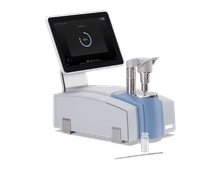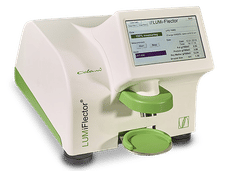The chemistry of exploding stars
Meteorite contains evidence of formation of sulfur molecules derived from the ejecta of a supernova explosion
Advertisement
Fundamental chemical processes in predecessors of our solar system are now a bit better understood: An international team led by Peter Hoppe, researcher at the Max Planck Institute for Chemistry in Mainz, has now examined dust inclusions of the 4.6 billion years old Murchison, meteorite, which had been already found in 1969, using a very sensitive method. The stardust grains originate from a supernova, and are older than our solar system. The scientists discovered chemical isotopes, which indicate that sulfur compounds such as silicon sulfide originate from the ejecta of exploding stars. Sulfur molecules are central to many processes and important for the emergence of life.

Star dust from a supernova. The electron microscopic image shows a silicon carbide grain from the meteorite Murchinson. The approximately one micrometre small grains originate from a supernova as an isotopic analysis has shown. Isotopes are forms of an element with different weights. Picture: Peter Hoppe, Max Planck Institute for Chemistry
© Peter Hoppe, MPI for Chemistry
Models already predicted the formation of sulfur molecules in the ejecta of exploding stars – the supernovae. Scientists from Germany, Japan and the U.S. now provided evidence to substantiate the theory with the help of isotope analyses of stardust from meteorites.
The team around the Mainz Max Planck researcher Peter Hoppe initially isolated thousands of about 0.1 to 1 micrometre-sized silicon carbide stardust grains from the Murchison meteorite, which was already found on Earth in 1969. The stardust grains originate from a supernova, and are older than our solar system. The researchers then determined with a highly sensitive spectrometer, the so-called NanoSIMS, the isotopic distribution of the samples. With this technique an ion beam is shot onto the individual stardust grains and releases atoms from the surface. The spectrometer then separates them according to their mass and measures the isotopic abundances. Isotopes of a chemical element have the same number of protons but different numbers of neutrons.
In five silicon carbide samples the astrophysicists found an unusual isotopic distribution: They measured a high amount of heavy silicon and a low amount of heavy sulfur isotopes, a result that does not fit with current models of isotope abundances in stars. At the same time they were able to detect the decay products of radioactive titanium which can be produced only in the innermost zones of a supernova. This proves that the stardust grains indeed derive from a supernova.
A proof for the model of the chemistry of the ejecta of supernovae
"The stardust grains we found are extremely rare. They represent only about the 100 millionth part of the entire meteorite material. That we have found them is very much a coincidence - especially since we were actually looking for silicon carbide stardust with isotopically light silicon," says Peter Hoppe. "The signature of isotopically heavy silicon and light sulfur can only be plausibly explained if silicon sulfide molecules were formed in the innermost zones in the ejecta of a supernova." Afterwards, the sulfide molecules were enclosed in the condensing silicon carbide crystals. These crystals then reached the solar nebula around 4.6 billion years ago and were subsequently incorporated into the forming planetary bodies. They finally reach the Earth in meteorites which are fragments of asteroids.
Carbon monoxide and silicon monoxide were already detected in infrared spectra of the ejecta of supernova explosions. Although models predicted the formation of sulfur molecules, it has not yet been possible to prove this. The measurements on silicon carbide stardust now provide support to the predictions that silicon sulfide molecules arise a few months after the explosion at extreme temperatures of several thousand degrees Celsius in the inner zones of supernova ejecta.
The meteorite studied was named after the Australian city of Murchison, where it was found in 1969. For astronomers, it is an inexhaustible diary about the formation of our solar system, as it has remained almost unaltered since its formation. Besides the stardust inclusions from the ejecta of a supernova Murchison also transported dust to the Earth which has been formed in the winds of giant red stars. Through further analyses, the researchers hope to learn more about the origin of their parent stars.
Original publication
Peter Hoppe, Wataru Fujiya and Ernst Zinner; Sulfur molecule chemistry in supernova ejecta recorded by silicon carbide stardust; The Astrophysical Journal Letters, published online, 12 January 2012




















































































